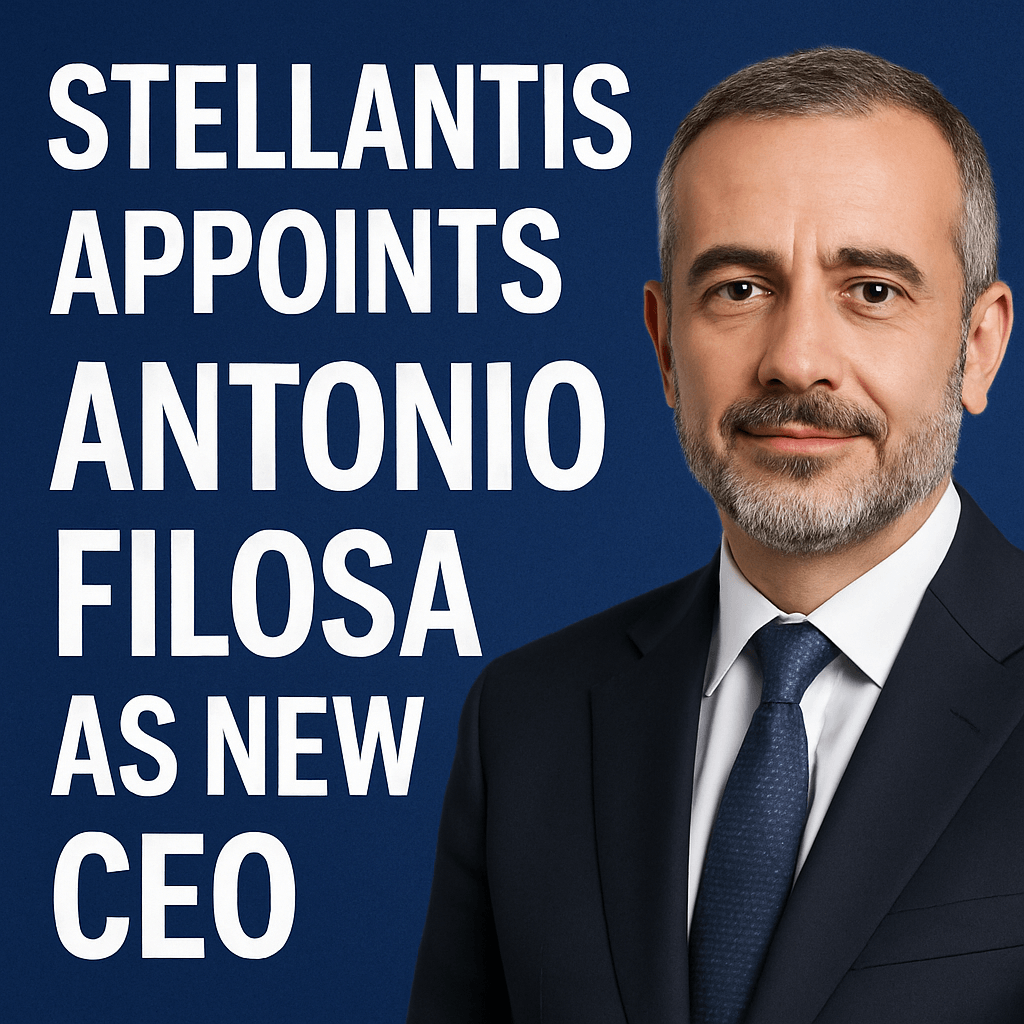Stellantis Appoints Antonio Filosa as New CEO

Appointment Overview
On Monday, Stellantis announced that its North American chief operating officer, Antonio Filosa, has been chosen as the company’s next chief executive officer. Filosa, 51, will officially assume his new responsibilities on 23 June, pending a formal shareholder vote at a meeting to be called in the coming days. This leadership transition comes as the automaker faces persistent manufacturing weaknesses, tariff pressures and an ambitious electrification roadmap.
Board Rationale and Leadership Credentials
The Board selected Antonio Filosa to be CEO based on his proven track record of hands-on success during his more than 25 years in the automotive industry, the depth and span of his experience around the world, his unrivalled knowledge of the Company and his recognised leadership qualities
Filosa’s global experience spans from overseeing lean-manufacturing plants in Europe to directing market launches in Latin America. He is credited with implementing advanced robotics in assembly lines and driving double-digit productivity improvements in key North American factories over the past two years.
Predecessor’s Legacy and Strategic Frictions
His predecessor, Carlos Tavares, resigned abruptly in December 2024 after issuing a profit warning in September. Under Tavares, Stellantis expanded its electric vehicle (EV) portfolio aggressively, aiming for 100 percent battery electric vehicle (BEV) sales in Europe by 2030. However, internal board disagreements over pacing the transformation and disappointing North American sales—where dealers reported significant unsold inventory—contributed to tensions at the top.
Market Context and Headwinds
Stellantis operates in a complex geopolitical environment. US tariff policies introduced by the previous administration continue to affect margins on imported models, while the Inflation Reduction Act has shifted subsidies toward domestic EV production. In Europe, lingering supply chain bottlenecks for semiconductors and rising raw material costs for lithium and cobalt have elevated input prices by up to 15 percent year-on-year.
Strategic Outlook under Filosa
Filosa is tasked with reversing manufacturing inefficiencies, realigning the product mix, and balancing investment between internal combustion engines (ICE) and electrified models. Key priorities include:
- Optimising global production footprint through digital twins and Industry 4.0 solutions
- Leveraging joint ventures with battery suppliers to secure raw material access and lower cell costs by 20 percent
- Aligning regional pricing strategies to mitigate tariff impacts and capitalise on government incentives
Deeper Analysis
1. Trade Policies and Tariff Pressures
With up to 25 percent levies on certain imported vehicles, Stellantis must reassess its North American production allocation. Expert analysts at Global Auto Insights estimate that rerouting 30 percent of European output to US factories could recoup over 200 million euros in annual duties.
2. EV Transition and Battery Strategy
Stellantis has signed battery supply agreements totaling 60 GWh through 2030. Filosa may accelerate cell manufacturing investments to capture a greater share of the lucrative US EV tax credit under the Inflation Reduction Act, which requires critical minerals and battery assembly to occur domestically.
3. Operational Efficiencies and Supply Chain Optimization
Implementing AI-driven demand forecasting and blockchain-based supplier tracking could reduce logistics lead times by up to 25 percent. Filosa’s past initiatives in predictive maintenance cut downtime by 18 percent, a blueprint he can apply across Stellantis’ 14 brands, from Jeep to Fiat.
Financial Implications and Investor Sentiment
Following the announcement, Stellantis shares rose 1.7 percent. Investors are watching closely for guidance on 2025 capital expenditures, particularly the split between ICE and EV programs. Credit rating agencies have flagged the importance of maintaining healthy free cash flow amid heavy R&D spending.
Technology and Innovation Roadmap
Under Filosa’s leadership, Stellantis plans to unveil its next-generation hybrid powertrain and a software platform enabling over-the-air updates for safety and infotainment systems. Partnerships with AI startups for autonomous driving capabilities remain on track for pilot testing in 2026.
As Stellantis moves into this new chapter, stakeholders will assess whether Filosa’s operational acumen and global perspective can steer the company through its manufacturing challenges and electrification ambitions.